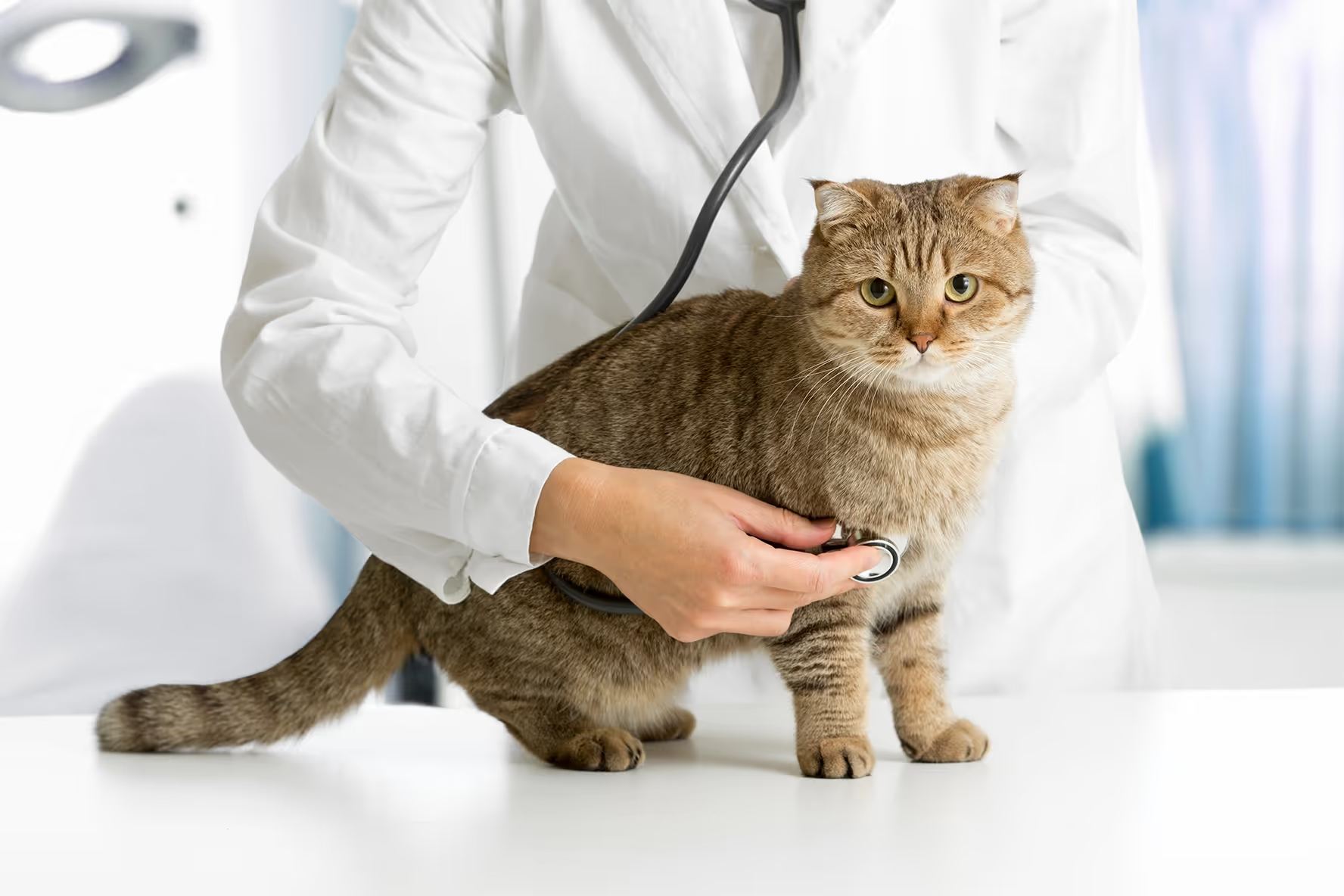
Feline lymphoma is one of the most common cancers in cats, affecting various parts of the body, including the gastrointestinal tract, kidneys, and lymph nodes. When a cat is diagnosed with lymphoma, treatment options often include chemotherapy, surgery, or radiation. However, for many cats, especially those where the cancer is too advanced or surgery is not feasible or other illness-preventing chemotherapy, steroid treatment with Prednisone can offer relief and support palliative care.
Steroids vs. Chemotherapy for Feline Lymphoma: Remission vs. Palliative Care
When a cat is diagnosed with lymphoma, deciding between treatment options can be overwhelming. Steroid treatment and chemotherapy are two common approaches, but they serve very different purposes depending on whether the goal is to achieve remission or provide palliative care.
Chemotherapy for Remission
Chemotherapy is often the treatment of choice when the goal is to push the cancer into remission. Remission doesn’t mean the cancer is cured but rather that the lymphoma is no longer detectable and symptoms have significantly improved or disappeared. Chemotherapy involves the use of various drugs to kill cancer cells, and it can be effective at slowing or stopping the progression of lymphoma in cats.
- Effectiveness: Chemotherapy offers a higher likelihood of remission, with some cats experiencing months or even years of improved health. About 50% to 70% of cats achieve remission through chemotherapy.
- Aggressiveness: Chemotherapy is a more aggressive treatment, requiring a regimen of multiple drugs administered over weeks or months. It can be costly and involves frequent vet visits.
- Side Effects: While cats typically tolerate chemotherapy much better than humans, there are still potential side effects, including gastrointestinal upset, loss of appetite, lethargy, and a weakened immune system. These side effects are generally mild and resolve on their own or with medication. It is rare for a cat to be hospitalized secondary to chemotherapy side effects.
- Goal: The primary goal of chemotherapy is to extend a cat’s life by achieving remission. In some cases, this approach can give a cat many months or even years of relatively good health.
Chemotherapy is often recommended for most cats because they tolerate it so well and can have a good response. However, it is not always suitable for every cat. Factors like age, overall health and other illnesses can influence whether chemotherapy is an appropriate choice. The type, stage of lymphoma, and potential length of survival after treatment can influence whether chemotherapy is an appropriate choice for a pet parent to take. There are many reasons someone would choose to treat with chemotherapy or not such as their schedule availability, travel demands, finances, and perceived risk versus benefit for their cat.
You can learn more about chemotherapy in cats in our post here.
Steroid Treatment for Palliative Care
Steroid treatment, particularly with Prednisone, is generally used when the end goal shifts from remission to palliative care—making the cat as comfortable as possible without trying to mitigate the cancer. Steroids work by reducing inflammation, shrinking tumors temporarily, and managing symptoms like pain and loss of appetite, but they are not intended to lead to remission.5
- Effectiveness: Steroids like Prednisone are effective at managing symptoms and improving a cat’s quality of life in the short term. However, they typically do not lead to remission and only slow down the progression of the disease for a limited time.
- Simplicity: Steroid treatment is far less invasive and costly than chemotherapy. Prednisone can often be administered at home and doesn’t require frequent vet visits or complex drug regimens.
- Side Effects: While the side effects of Prednisone, such as increased thirst, urination, and appetite, are usually mild and not as common in cats as they are in dogs and people, long-term use can still affect a cat’s health. However, these side effects are often acceptable in palliative care, where the primary focus is on comfort.
- Goal: The goal of steroid treatment in palliative care is not to extend life significantly but to ensure that a cat’s remaining time is as comfortable and pain-free as possible.
Steroid treatment is often recommended for cats whose lymphoma is advanced, where chemotherapy is not an option because of the cat’s overall health or owner’s choice for various reasons listed earlier.
Remission vs. Palliative Care: What’s the Difference?
- Remission: The goal of remission is to temporarily eliminate the signs of lymphoma, often through chemotherapy. While remission offers the possibility of extended survival and improved quality of life, it requires more intense and aggressive treatment.
- Palliative Care: Palliative care, on the other hand, focuses on managing symptoms and maintaining comfort rather than actively fighting the cancer. Steroid treatment fits into this approach by addressing secondary effects from lymphoma like decreased appetite, stomach upset, swollen lymph nodes, or masses which all make the cat ill. Prednisone can help to lessen these symptoms and improve appetite and energy for a time, but steroids alone will not cure the disease nor achieve remission.
The bottom line is that chemotherapy is aimed at extending the cat’s life and steroids alone are for symptom management. The choice between these treatments depends on the cat’s overall health, the progression of the lymphoma, and the pet owner’s goals for their cat’s care.
What Is Prednisone?
Prednisone is a corticosteroid commonly used in veterinary medicine to reduce inflammation and suppress the immune system. It’s widely prescribed in the treatment of feline lymphoma due to its ability to improve the cat’s overall quality of life. Although it is not a cure for cancer, Prednisone plays an essential role in palliative care, especially for cats who cannot undergo more aggressive treatments.1
How Does Prednisone Help Cats with Lymphoma?
When a cat’s lymphoma has progressed, Prednisone can help in several ways:
- Anti-inflammatory Effects: Lymphoma can cause significant swelling in organs like the lymph nodes and intestines. Prednisone helps reduce this inflammation, easing discomfort and improving function.
- Appetite Stimulation: Cats with cancer often lose their appetite, leading to weight loss and weakness. Prednisone can help stimulate their appetite, encouraging them to eat and maintain strength.
- Pain Management: Prednisone can reduce the discomfort associated with tumors, allowing cats to experience a better quality of life in their remaining time.
- Temporary Tumor Shrinkage: While it doesn't eliminate tumors, Prednisone can help shrink them temporarily, giving cats some more time before the cancer’s progression becomes debilitating.
Prednisone as a Part of Palliative Care
Palliative care focuses on keeping a cat comfortable and pain-free as their illness progresses. Prednisone fits into this approach by providing symptom relief without the need for invasive treatments. Since it has manageable side effects in the short term, many pet owners opt for Prednisone to manage symptoms in older cats or those whose cancer is too advanced for aggressive treatment.6
While Prednisone can offer significant benefits, it is essential to remember that there is not a cure for feline lymphoma. The steroid's effectiveness is typically short-term, and over time, the cancer will continue to progress. However, when used in palliative care, Prednisone helps make a cat’s final months or weeks more comfortable.
Potential Side Effects of Prednisone in Cats
Like any medication, Prednisone comes with side effects.1,2
Common side effects in cats include:
- Increased thirst and urination
- Increased appetite (which can lead to weight gain)
- Lethargy or hyperactivity
- Gastrointestinal upset, such as vomiting or diarrhea
For most cats, these side effects are manageable, but it’s essential to work closely with your vet to monitor your pet’s reaction to the medication and adjust the dosage if necessary.
When to Consider Prednisone for Your Cat
If your cat has been diagnosed with lymphoma and more aggressive treatments aren’t an option, Prednisone can offer symptom relief and improve your cat’s quality of life.3
It is often prescribed when:
- Chemotherapy is not tolerated or chosen as a treatment
- The cancer is too advanced for surgery or radiation treatment depending on the location
- Owners prioritize their cat’s comfort over aggressive interventions
In many cases, Prednisone can give pet owners extra time with their beloved cats while ensuring that the cats remain as comfortable as possible.
Find the Best Treatment for Your Cat
Prednisone is a valuable tool in managing feline lymphoma, offering relief from pain and discomfort. While there is no cure for the cancer, steroids play a significant role in palliative care, helping cats live out their final days with dignity and comfort. Always consult with your veterinarian to decide if Prednisone is the right option for your cat and to ensure proper dosage and monitoring.
ImpriMed can help your veterinarian make the right call with the support of precision veterinary medicine. Find out more about what ImpriMed can do to support your cat’s lymphoma journey.
References:
- https://www.goodrx.com/pet-health/cat/prednisolone
- https://vcahospitals.com/know-your-pet/prednisoloneprednisone
- https://vcahospitals.com/know-your-pet/steroid-treatment-long-term-effects-in-cats
- https://vcahospitals.com/know-your-pet/lymphoma-in-cats
- https://www.drlawrenvet.com/insights/palliative-care-for-cats-with-lymphoma
- https://www.dvm360.com/view/extending-quality-life-cancer-patients


